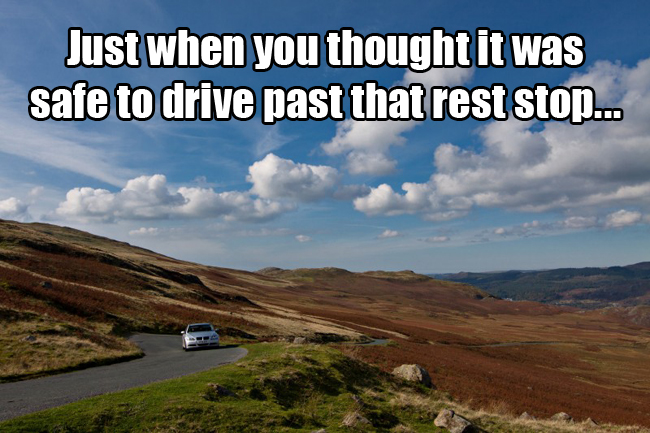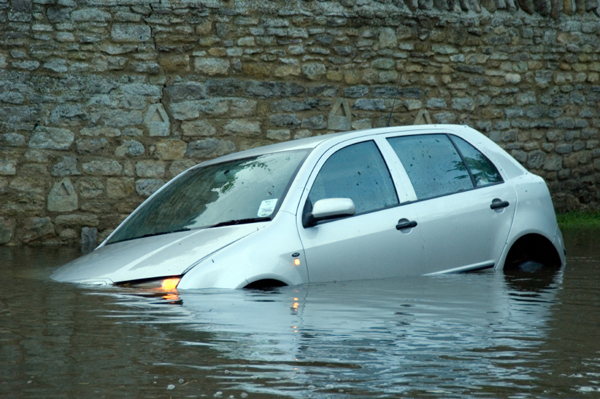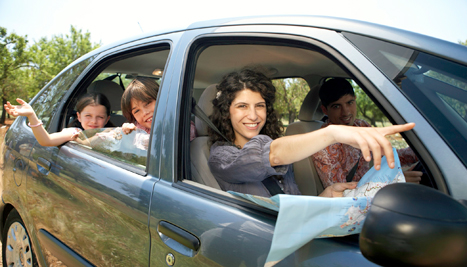Worst-Case Wednesday: How To Survive A Long Car Journey
Photo courtesy of Tom Eversley
Every Wednesday, we offer advice and strategies to survive all of the most dire and urgent circumstances, as well as some of the more common scenarios we all deal with.
This week we've got an excerpt from The Worst-Case Scenario Survival Handbook: Parenting. Summer car trips are a staple of American life, but also sometimes the most aggressive battle ground for families. Luckily we have what you need to wrangle your children into enjoying the ride without threatening to TURN THIS CAR AROUND RIGHT NOW, JIMMY!
How To Survive A Long Car Journey
From The Worst-Case Scenario Survival Handbook: Parenting
- Cover the seats with a large bath towel or sheet. The cover will protect the back seat and expedite clean-up later.
- Leave early. Start a long car trip early – before dawn – to ensure that kids will be sleepy and will nap for the first few hours of the ride. If they wake at or near rush hour, pull over to avoid traffic and get a break from driving.
- Bringing along a few key items, but only what you really need. Essential items include snacks, games, open-ended creative toys, and passive entertainment devices (such as CD players and Portable DVD players).
- Make frequent stops. Do not expect small children to sit still for more than an hour or two at a time. Make frequent rest stops to switch drivers, stretch, throw a ball, run around, and go to the toilet. These stops also serve to fend off car-sickness and keep the driver alert.
Bathroom breaks are essential, but what if there isn’t a rest stop nearby? Don’t worry, we have you covered.
How To Pee At The Side Of The Road
- Pull over. Find a spot with adequate coverage, usually in the form of bushes or thick trees, that is a safe distance away from the road.
- Exit the car away from the road. Leave the door open to further block visibility. Take tissues or serviettes with you, if available.
- Select a position behind a tree or bush. Position your child 180 degrees from view of oncoming traffic. In general, boys should pee facing downhill, while girls should pee facing uphill.
- Assess the weather conditions. Asses the direction of the wind, and position your child to pee with it.
- Assemble a “human shield”. If there is little or no coverage, line up other members of the family to form a “human shield”.
- Keep Quiet. Do not speak to the family member who is attempting to go. It may be distracting and will only prolong the stop and the trip.
With all this in mind, you’ll be ready for that ten hour car ride to Disney, or even a fourteen hour joy ride to the Grand Canyon. Happy Travels!

Hannah Frank
Hannah Frank is a creative writer, television aficionado, and cool ranch Doritos fan. She wishes she could live forever and is currently seeking advice on how to do so which does not include exercise, kale, or vampires.



